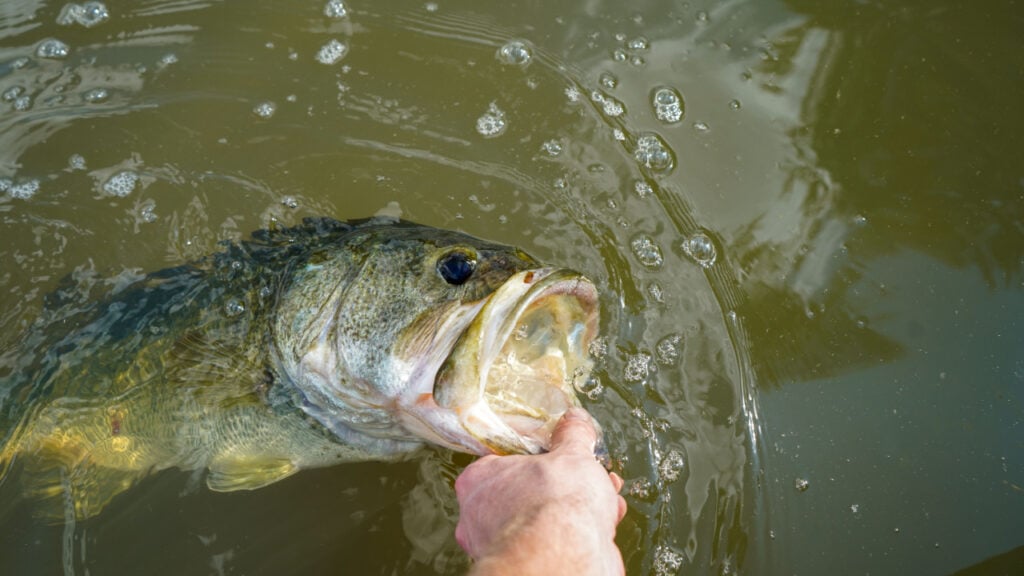Catching a trophy largemouth bass is a thrill anyone can experience, no matter their setup. These fish aren’t picky eaters—they’ll smash a cheap spinnerbait or a high-end lure with the same enthusiasm. Whether you’re casting from a muddy bank or a shiny bass boat, if your bait crosses a hungry bass, it’s game on.
That said, relying on pure luck to land big bass consistently is a long shot. You don’t need a fancy rig or the latest tech, but you do need to dial in a few key factors. It’s less about gear and more about how you think and where you focus.

Shift Your Thinking
The biggest hurdle to catching trophy bass is your own head. When you first start fishing, any bite feels like a win. Small or big, it’s all about that tug on the line. But to chase giants, you’ve got to flip that script. Big bass don’t usually hang out in big groups. They’re loners, staking out their own territory.
This means you won’t get a lot of bites. Forget the idea that big bass anglers are just sorting through dozens of small fish. I used to think that too, watching pros weigh in 25-pound bags at places like Lake Fork or Sam Rayburn. I figured they were catching fish nonstop and keeping the biggest. Nope. My best days—a 27-pound limit on Fork and a 28-pound haul on Rayburn—came from maybe six or seven bites all day. Last summer, my buddy and I won a local tournament with 16 pounds on Logan Martin. Total bites? Nine.
Fishing for big bass tests your patience. You’ll cast for hours with nothing to show for it. It feels wrong, like you’re wasting your time. But every cast is a bet on that one monster bite. You’ve got to trust the process and ignore the voice telling you to switch spots or try something else.

Fish the Lonely Spots
Big bass like their space. They’re not always solo—sometimes they’ll group up in small packs—but most of the time, they’re off by themselves. Why? For one, bass eat other bass. A 6-pounder isn’t above chowing down on a 2-pounder. Smaller fish know this and steer clear. Plus, big bass are territorial. They bully smaller fish away from prime feeding zones.
To find these loners, look for isolated cover. Think of a single stump in a cove, a lone dock on a stretch of bank, or a patch of hydrilla in open water. These are ambush spots where a big bass can hide and wait for prey like crawfish or shad to wander too close. When I’m scouting, I’m drawn to anything that stands out: a fallen log, a random boulder, or a single piling. That’s where the big ones lurk.

Gear Up Right
You don’t need a $1,000 rod to catch a giant, but the right gear makes a difference. A basic 7-foot medium-heavy casting rod with 12-pound fluorocarbon can handle most situations. But if you’re chasing big bass in specific scenarios, you’ll need to get specialized.
Take flipping heavy cover, like thick lily pads or matted grass. You’ll want a heavy-action rod, 30-pound braid, and a stout hook to yank a 7-pounder out of that jungle. A 1-ounce tungsten weight helps punch through the vegetation. On the flip side, if you’re finesse fishing for big smallmouth in clear water, a 6-foot-8 medium-light spinning rod with 8-pound fluorocarbon is better. It’s about matching your gear to the environment.
Putting It All Together
Catching big bass consistently comes down to three things: rethinking your approach, targeting isolated cover, and using the right tools. It’s not easy to go hours without a bite, but that’s the deal when you’re hunting trophies. Focus on those lonely spots where a big fish can dominate. And make sure your gear can handle the fight when it happens.
It takes time to get comfortable with this style of fishing. You’ll second-guess yourself, wonder if you’re doing it wrong. But stick with it. The first time you feel that rod double over and see a giant bass break the surface, it’s all worth it.


Add comment